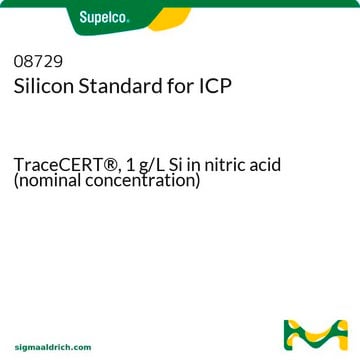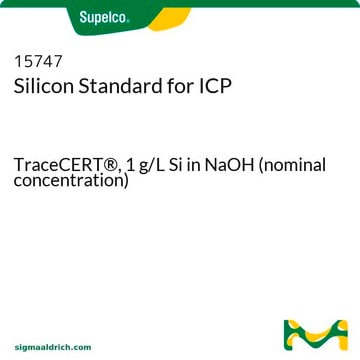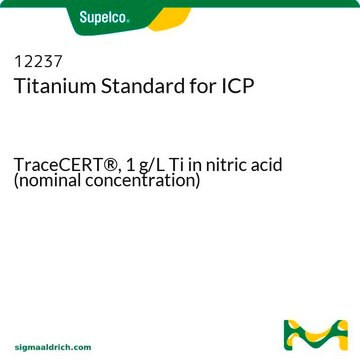GF16363391
Silicon
rod, 10mm, diameter 2.0mm, crystalline, 100%
Sinónimos:
Silicon, SI007905
About This Item
Productos recomendados
Ensayo
100%
Formulario
rod
fabricante / nombre comercial
Goodfellow 163-633-91
L × diám.
10 mm × 2.0 mm
bp
2355 °C (lit.)
mp
1410 °C (lit.)
densidad
2.33 g/mL at 25 °C (lit.)
cadena SMILES
[Si]
InChI
1S/Si
Clave InChI
XUIMIQQOPSSXEZ-UHFFFAOYSA-N
¿Está buscando productos similares? Visita Guía de comparación de productos
Categorías relacionadas
Descripción general
Información legal
Elija entre una de las versiones más recientes:
Certificados de análisis (COA)
It looks like we've run into a problem, but you can still download Certificates of Analysis from our Documentos section.
Si necesita más asistencia, póngase en contacto con Atención al cliente
¿Ya tiene este producto?
Encuentre la documentación para los productos que ha comprado recientemente en la Biblioteca de documentos.
Nuestro equipo de científicos tiene experiencia en todas las áreas de investigación: Ciencias de la vida, Ciencia de los materiales, Síntesis química, Cromatografía, Analítica y muchas otras.
Póngase en contacto con el Servicio técnico




